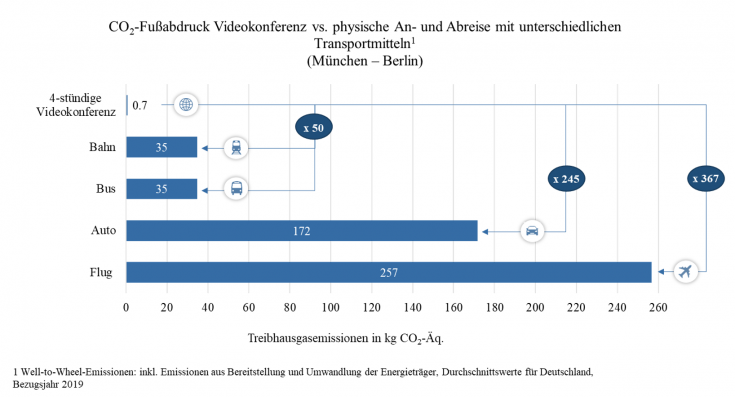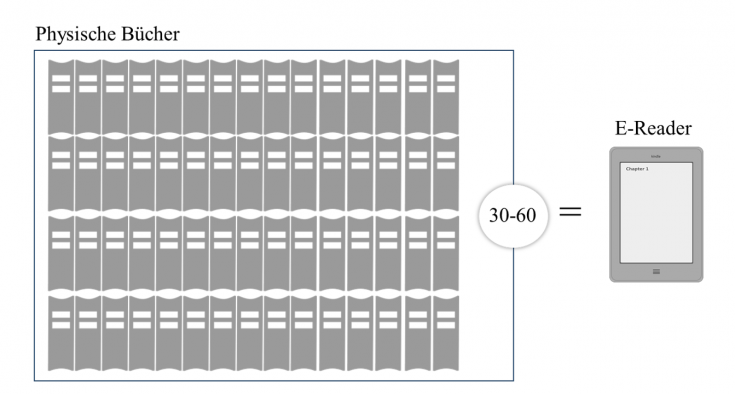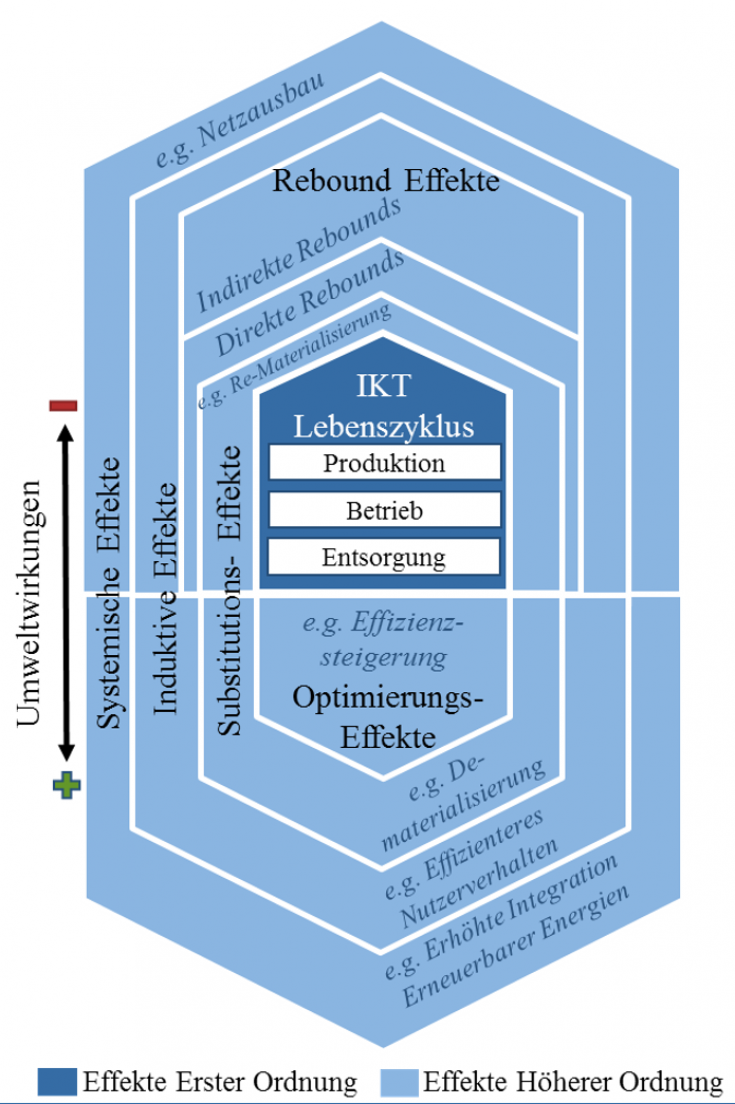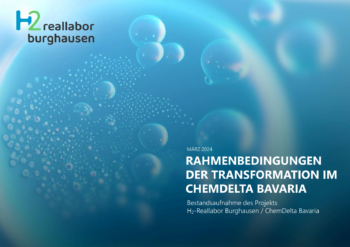Digitalisation and sustainability: (How) do they fit together?
This article is part 2 of 3 in the series of articles “Sustainability aspects in the decentralized and digital energy system”.
Series of articles “Sustainability aspects in the decentralized and digital energy system”
- Participative aspects in the smart energy system – between theory and practice
- Digitalisation and sustainability: (How) do they fit together?
- Life cycle assessment of the rollout of smart metering systems
After part 1 of this series deals with social sustainability aspects by looking at participation opportunities in the digital energy system, part 2 looks at the topic of sustainability from an ecological perspective. Based on this article, the author published a blog post at the City of Munich, which can be accessed here.
Digitalisation and sustainability – two global trends
Our society is becoming increasingly digital – not least due to the worldwide COVID 19 pandemic. This affects all sectors and areas of life: via digital navigation devices, online shopping, information provision and communication to the increasingly automated control of industrial processes and the digitalisation of the energy system. Such a profound change and paradigm shift not only changes our consumer behaviour, but also leads to increased resource consumption for the production, use and disposal of digital components and infrastructures. In a global comparison, ICT caused a similar amount of CO2 emissions in 2017 (approx. 1.4 %) as international air traffic [1]. However, an accompanying increase in the global data volume is offset by an improvement in computing capacities and increases in the efficiency of storage technologies. Combined with an increasingly low-emission electricity mix through the expansion of renewable energies, there is the possibility of reducing up to 80% of the CO2 emissions caused by information and communication technology, whereby the greatest direct savings effects are to be expected through efficiency improvements in data centres. [2]
In addition to the additional energy and resource requirements, digitalization offers the opportunity to enable the necessary decarbonization to achieve the global climate goals. The questions to be addressed are what contribution digitalization can make to the desired transformation and how the sustainability of the use of digital technologies compares to analogue alternatives. In this paper, possible environmental effects – both positive and negative – are presented as examples, which can arise depending on the application and the design of digitalization measures.
Environmental effects of digitalisation – positive or negative?
The magnitude of the environmental impact of digital processes is often less present in the public debate compared to physical emitters, such as combustion engines or aircraft. Yet the impacts and the potential ecological added value depend on the respective area of application and the design of corresponding digitalisation measures. In this article, the associated environmental impacts are shown as examples for various use cases.
One currently omnipresent example is the increasing use of digital meetings compared to physical meetings. Not only can time be saved by not having to travel to and from the meeting, but the CO2 footprint is also correspondingly lower with virtual participation than with physical travel. Figure 2 shows this using the example of a conference in Berlin, which is attended from Munich.

According to [4], in the case of purely virtual participation, a total of 0.7 kg CO2 equivalents are produced (assumption: 4-hour video conference). This value includes emissions over the life cycle for the production of the devices (laptop, router) as well as for the use phase, i.e. during streaming. Taking the example of a physical conference in Berlin, the value for the journey to and from Munich (approx. 1,200 km, round trip) is 50 to 367 times higher, depending on the means of transport chosen. These average values for Germany according to [3] correspond to a so-called “well-to-wheel” consideration and include greenhouse gas emissions from the use as well as the provision and conversion of the fuels petrol, diesel, electricity and jet fuel.
As an example of digitalisation in our everyday lives, a study on the use of an e-reader compared to the consumption of conventional books can be cited (see [5]). The results show that the environmental impact of the digital device is equivalent to 30 to 60 printed books (see Figure 2). Accordingly, an e-reader is only worthwhile from an ecological perspective if a correspondingly high number of books are read with it before the device becomes defective or is replaced for other reasons.

Direct and indirect effects
For a complete quantification of the footprint, all phases of the life cycle of a product or service must be included. A so-called life cycle analysis (LCA) therefore includes raw material extraction, production, operation and end-of-life use. When considering these life cycle-based emissions, we speak of direct effects or first order effects.

Indirect or higher order effects, on the other hand, consider impacts beyond this system boundary of the technology perspective. In the literature on assessment methods for the environmental impacts of ICT (cf. [6], [7]), indirect effects are divided into positive or negative effects, as shown in Figure 3 using the example of ICT in the smart energy system. For example, the introduction of intelligent metering systems, iMSys for short, (cf. series of articles on smart metering) and the resulting provision of consumption data to consumers can achieve energy savings, which have a positive effect on the life cycle assessment as optimisation effects. However, these savings can be partially offset by negative rebound effects or even lead to an overall increase in resource or energy consumption, e.g. through the purchase of additional (ICT) devices. In addition to changes in the behaviour of end consumers, systemic effects in particular have a significant influence on the environmental impacts of ICT in the energy system. Positive effects can be a more efficient integration of renewable energies or electrical consumption systems through intelligent control. On the other hand, new functions and business models can also lead to negative environmental effects. One possible effect is an increased need for grid reinforcement or expansion due to additional loads on the conventional grid infrastructure caused by simultaneity in the control of consumption systems based on price signals.
Conclusion: Digitalisation represents a potential for long-term ecological sustainability – taking into account possible environmental effects
In summary, digitalisation has great potential to make a positive contribution to a more sustainable society. Digitalisation can be seen as an “enabler” of decarbonisation through new solution concepts. In a holistic assessment of environmental impacts, however, both life-cycle-based energy and resource consumption and secondary positive and negative effects of increasing use of digital technologies must be taken into account. Ultimately, in addition to the right technical design, it is our behaviour that matters in order to contribute to the transformation in the long term.
Outlook Part 3
In the context of the digitalisation of the energy system, FfE has conducted such an analysis for the use of a smart metering system (iMSys) in the course of the C/sells project. In the article “Environmental impacts of digital participation concepts”, the lifecycle-based ecological footprint of smart metering systems is presented, focusing on the hardware components. Building on this, the following Part 3 of this series of articles, “Life Cycle Assessment of the Rollout of Smart Metering Systems”, presents the findings of further analyses. The focus here is on the development of a methodical approach to system boundary expansion in order to include processes of data transmission and storage using the example of a flexibility call-off.
Literatur:
[1] Hofmann, Josephine et al.: IT und Nachhaltigkeit – eine Einführung. In: HMD Praxis der Wirtschaftsinformatik 58/2021. Stuttgart, Deutschland: Fraunhofer IAO, 2021.
[2] Ericsson: A quick guide to your digital carbon footprint – Deconstructing Information and Communication Technology’s carbon emissions. 2020.
[3] Vergleich der durchschnittlichen Emissionen einzelner Verkehrsmittel im Personenverkehr – Bezugsjahr 2019. Berlin: Umweltbundesamt, 2020.
[4] Gröger, Jens: Digitaler CO2-Fußabdruck – Datensammlung zur Abschätzung von Herstellungsaufwand, Energieverbrauch und Nutzung digitaler Endgeräte und Dienste. Berlin: Öko-Institut e.V., 2020.
[5] Lange, Steffen et al.: Smarte grüne Welt? – Digitalisierung zwischen Überwachung, Konsum und Nachhaltigkeit. München: oekom Verlag, 2018.


